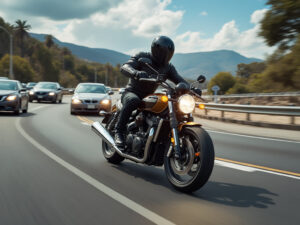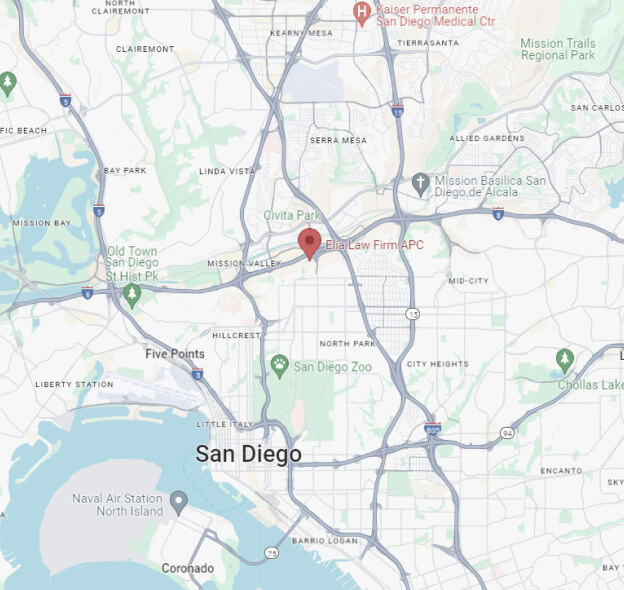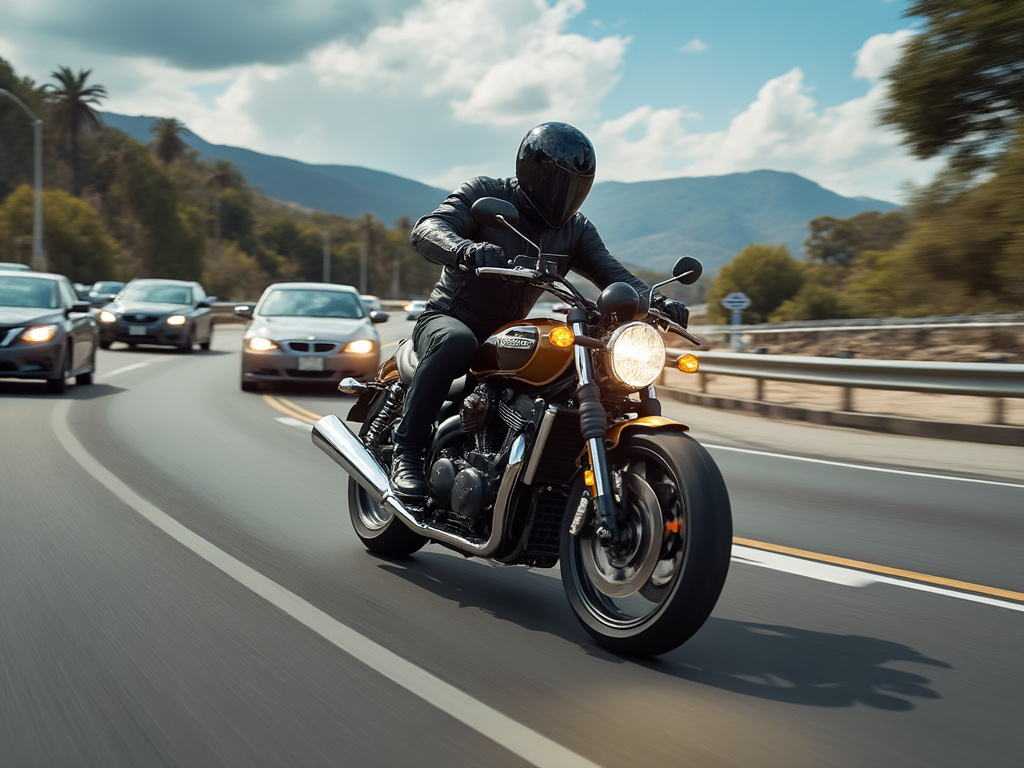This officer’s actions are one problem, but a symptom of an even bigger one
On July 11th Ken Adams and another person were cycling Glendora Mountain Road/Glendora Ridge Road, a paved one-laner that loops around from Glendora toward Mt. San Antonio (AKA Mt. Baldy), when the CHP officer you see in the video passed by them. The SUV was about two feet away when it passed them, and later the same CHP SUV passed them again, coming even closer to hitting the cycling pair. Shortly after that, the patrol vehicle turned and came at the cyclists from the front. You can hear for yourself just what the officer had to say about his performance in the video taken after the officer U-turned to have a chat. Finished watching? Good. Here’s where he’s wrong.
When bicycles and cars share the road, how close is too close?
There’s a simple answer to this question according to the law: at least three feet. That’s how much space cars have to keep between themselves and bicyclists according to the California Vehicle Code since September 2014 saw the Three Feet for Safety Act come into effect. It forces drivers to pay attention to their relative positions and speed around cyclists, to make them pay attention to how they drive. On the cyclist’s side, it’s about zoning. If a cyclist falls over, the more space between them and the nearest car, the less likely they are to end up under that car’s wheel. Most states now have some kind of three foot law, though in other states it’s left to drivers to decide their own safe distances, or there might be specific rules for how fast you can pass them, and so forth.
This is a good uncomplicated law, and widely understood. So why is this CHP officer having so much trouble understanding it?
The highest principle behind traffic laws is safety
We do not have video recordings of the close shaves. But during the clip above, we can clearly hear how the officer does NOT say that he was following the Three Feet for Safety Act. His insistence that he could not move further away from the cyclists is tacit acknowledgment that he was in the wrong. The double yellow line law he claims he could not break does not apply; you only have to look at the road to see that there IS no double yellow line, or separate lanes at all. As there is no traffic, oncoming or otherwise, for miles, giving the bicyclists their space is as legal as it is good manners.
Next, look at the officer’s claims that the bicycles needed to move even further to the right. Putting aside the bad faith implicit in that statement (the bicycle with the camera is nearly riding on the line), the officer does not understand the position bicycles have in road law. Bicycles are road vehicles with special rules, such as special paths and the ability to use some sidewalks. Where these special exceptions do not apply, a bicycle is typically subject to the same rules as a motor vehicle.
Let’s look at the California vehicle code: where there is no bicycle lane, a rider “shall ride as close as practicable to the right-hand curb or edge of the roadway”. As written, that sounds like it means that bikes need to always be near the rightmost edge, but this rule only applies when the bike is moving slower than the speed of traffic. When two bicycles are the only vehicles on the road as far as the eye can see, the speed of traffic could be said to be their own speed! From there it would not be hard to argue the cyclists have the right to use the entire lane, so long as they do not unduly upset the overall flow of traffic. The CVC covers this as well: slow moving vehicles only have to give way when they’re in front of five vehicles. In other words, bicycle riders in this situation are a lot like tractors in that they can’t help but go slower than other vehicles they share the lane with, but are still entitled to use the lane. And yet, tractor drivers don’t have to put up with half as many problems as bicyclists.
Cyclist harassment is an ongoing problem with multiple expressions
What’s most concerning about this incident is that second pass. Adams says that the first time the SUV passed with two feet to spare. The second time the vehicle came within one foot of the cyclists. Why? There was clearly room to spare, even on the narrow road, so why would the officer feel the need to play one-sided chicken? It is reckless, at best, but it is likely the near misses stem from just not caring.
Some drivers are unnecessarily hostile towards those they share the road with, sometimes due to road rage and sometimes thanks to preexisting beliefs about cyclists. Take this striking video from a few years ago:
Here’s a 75 year old Coloradoan honking at cyclists for two minutes straight. He could have overtaken the cyclists, and if he didn’t want to cross the double yellow there are clearly line breaks where he could have passed legally. He tailed the pair because he wanted to harass some cyclists, and he wound up with fines and on probation.
These kinds of incidents are all-too common, and are not limited by geography, age, job or anything else. This is no organized campaign of harassment, just individuals acting out, but the incidents add up and each and every one has a chance of spiraling into something worse.
He’s forgetting the spirit of the law
The cop who talked with Adams knows the law. Moreover, he knows what the law is there for. Traffic laws are designed to keep everyone safe, whether pedestrian, cyclist or driver. That’s why there is flexibility. Sometimes hugging the side of the road is not safe. There may be potholes, debris, pedestrians, parked cars and other things we can’t imagine. That’s why the law allows cyclists to take over the lane when necessary.
So drivers, if you think cyclists are in the wrong when they’re in your road, it’s time to rethink it. It’s not your road. It’s theirs too.
That said, we’d like to see roadways where everyone has the space they need to get to their destinations without interference. We feel the real solution is the creation of safe bikeways. Read more on that topic here and here, and support your local bicycle coalitions who are working hard to make this a reality.
So what can cyclists learn from this?
People are hurt and killed every day because of incidents just like these. The perpetrators are not malicious so much as careless or frustrated, but it doesn’t change the damage they do. Thankfully, those in the examples here were caught in the act, and now cyclists can take away a few lessons about how to deal with similar situations:
- Remain calm, think clearly: Don’t panic, don’t get angry, don’t engage. Instead, ask yourself what you have to do to stay safe. Put distance between yourself and the harasser. Make sure you keep your attention on the road.
- Don’t break the law: Traffic laws are designed to keep everyone safe, pedestrians, cyclists and drivers. Following the law is safer than not, even (or maybe especially) when the other party is not. Make sure that you know your rights and responsibilities.
- Document proof: Take videos and pictures. The videos here are the proof of wrongdoing, and their release guarantees that people know what happened. But a video doesn’t have to go viral in order to prove your version of events. If you don’t have a handlebar camera, a cellphone can do the job, but make sure that you stay in control while you film.
And of course, if you have been injured as a result of road rage or harassment, be sure to consult with an expert bicycle accident attorney who will fight for your rights and see that you get the compensation you deserve.
For more information about road and cycling safety in San Diego or elsewhere and what you can do to improve it, visit the website of San Diego’s bicycle coalition.
If you are a cyclist and have been injured as a result of anyone failing to follow the three foot law, you may be entitled to compensation. The attorneys here in San Diego at the Elia Law Firm are expert personal injury and bicycle accident attorneys well versed in motor vehicle law as it results to bicycle accidents and injuries. Give us a call to find out if you have a case. There is no fee. Or submit our case review form below.
- Who Is at Fault in a Motorcycle Lane Splitting Accident in California? - August 26, 2024
- Are Dogs Attacking Without Warning or Are We Misinterpreting Key Signals? - March 4, 2024
- Can You Sue If No One Witnessed Your Slip and Fall Injury? - February 10, 2024















 SEO by Everest Legal Marketing
SEO by Everest Legal Marketing